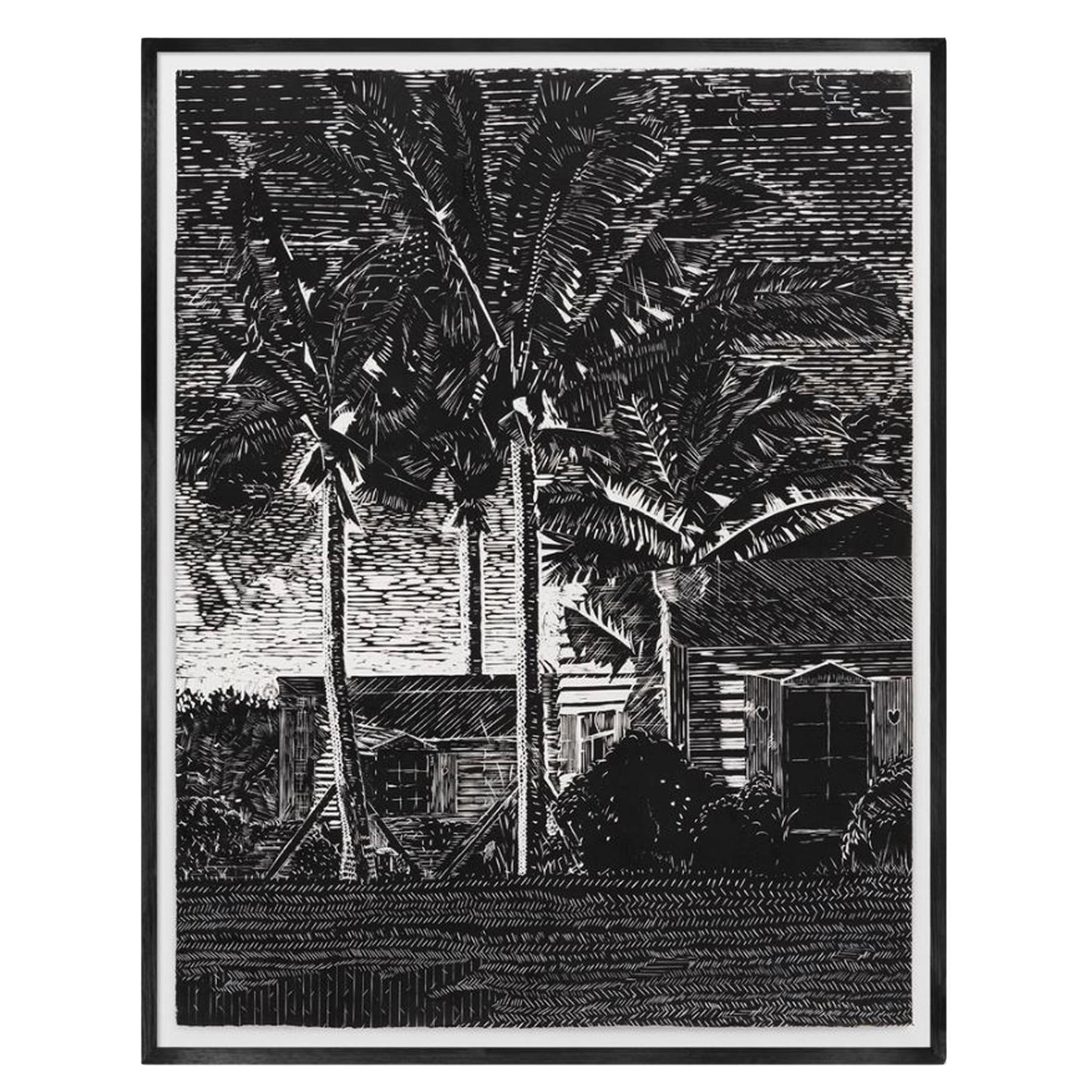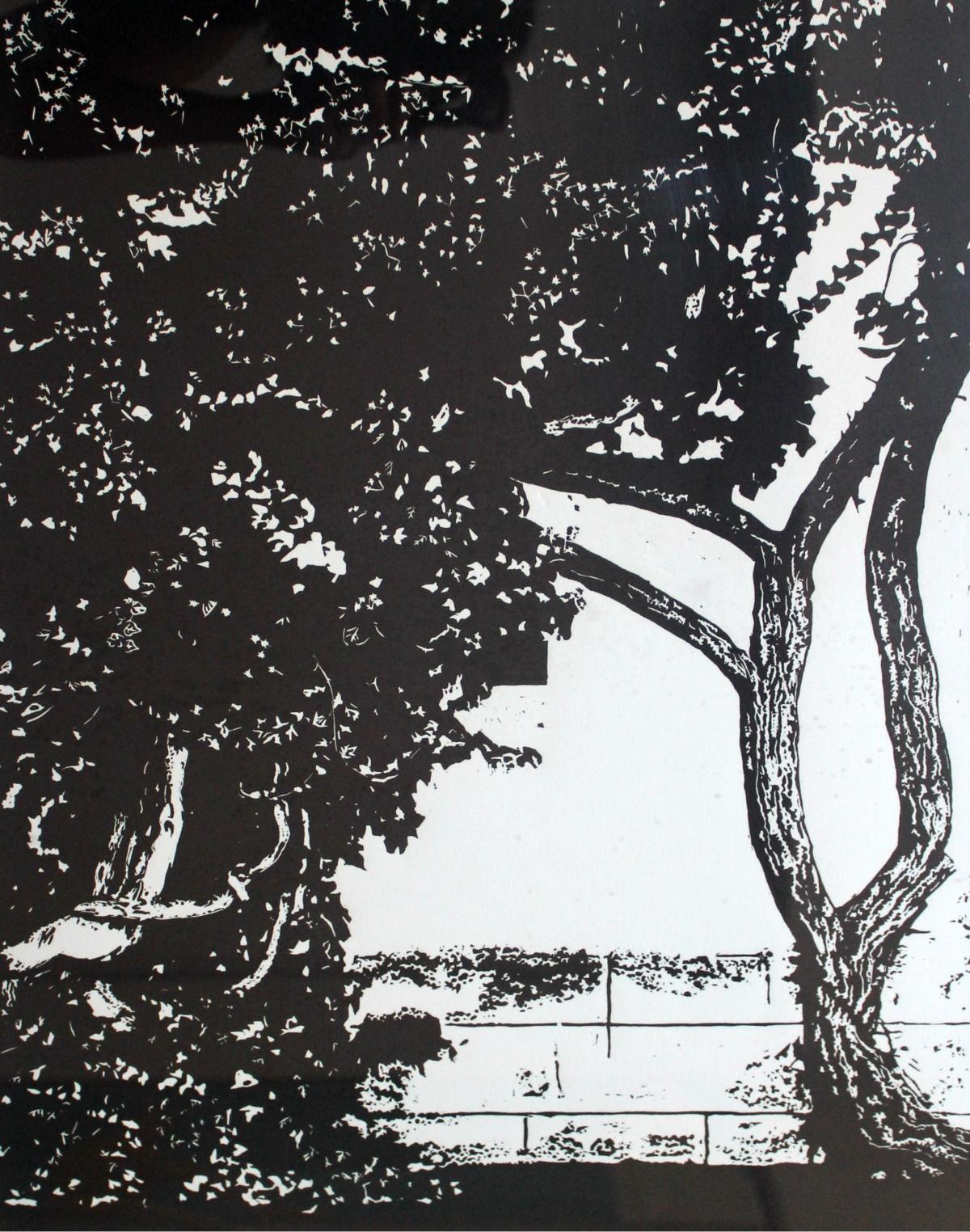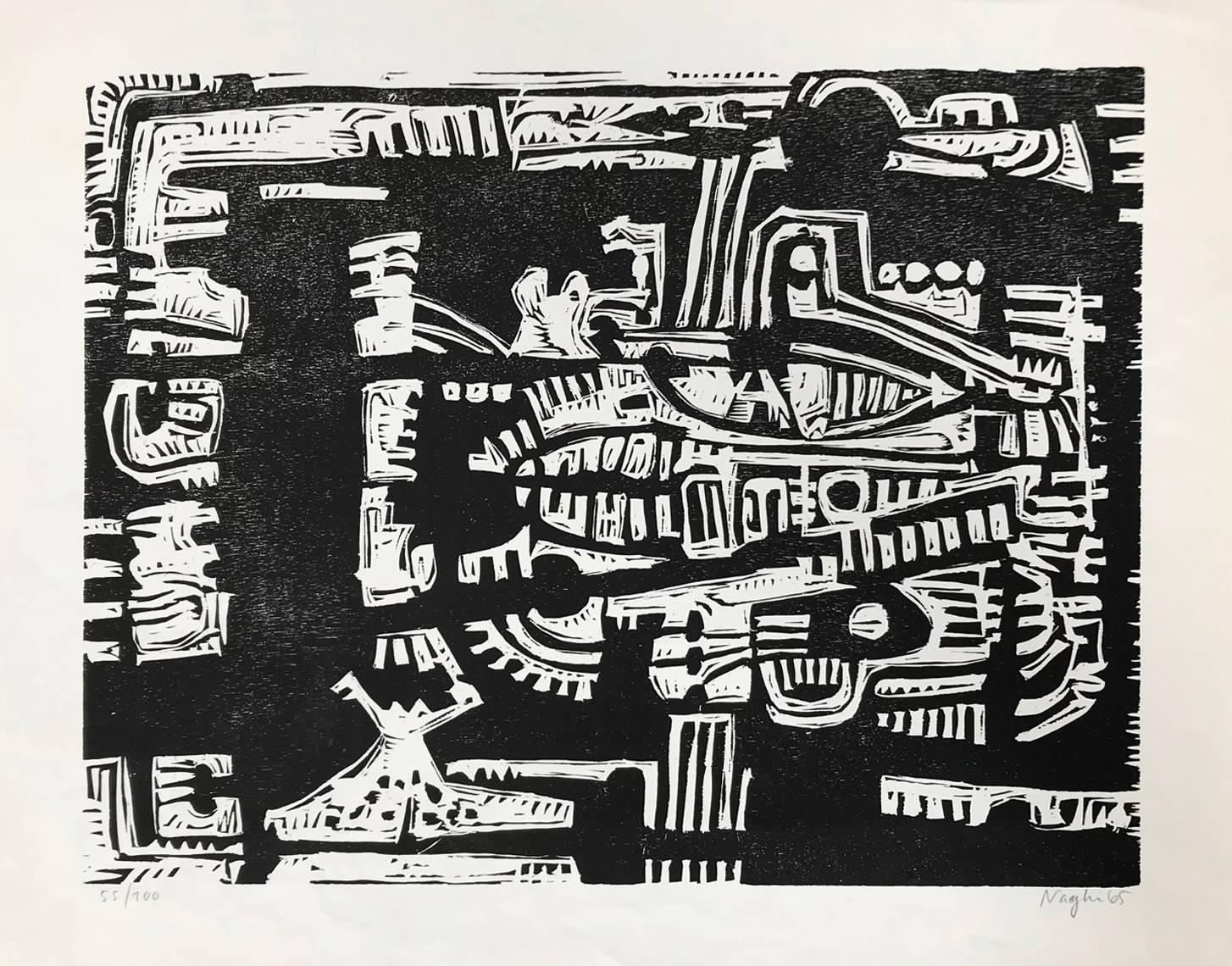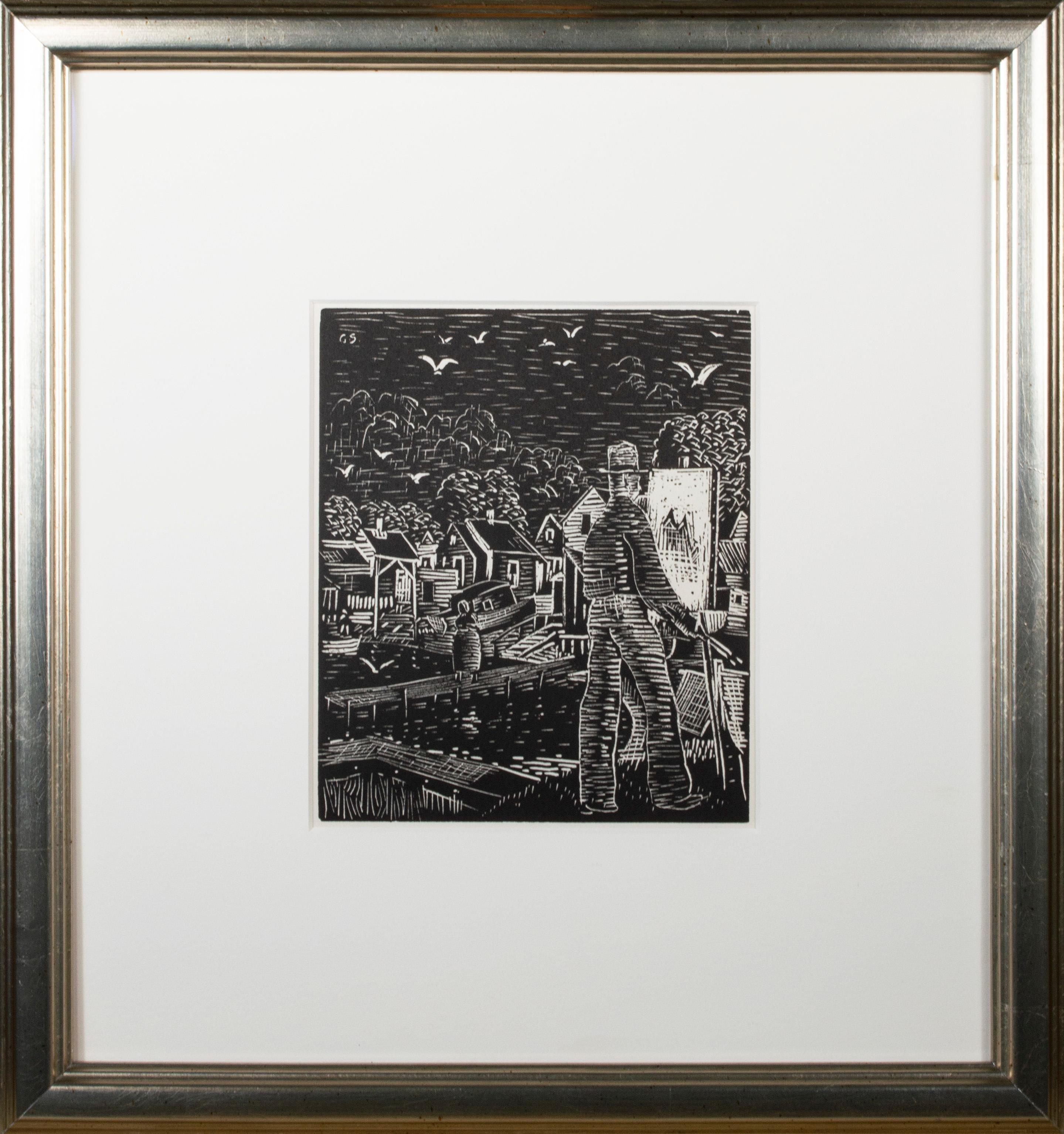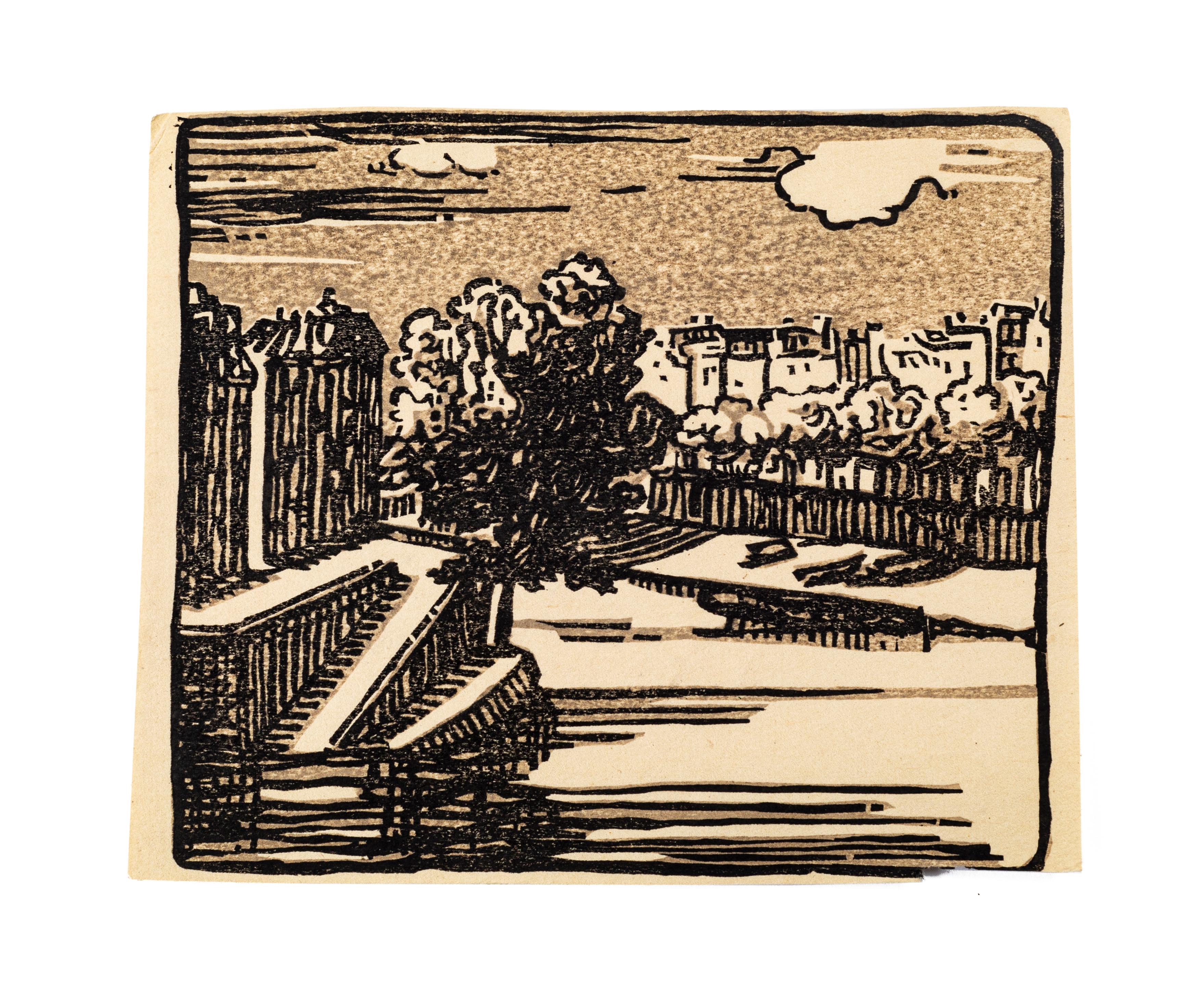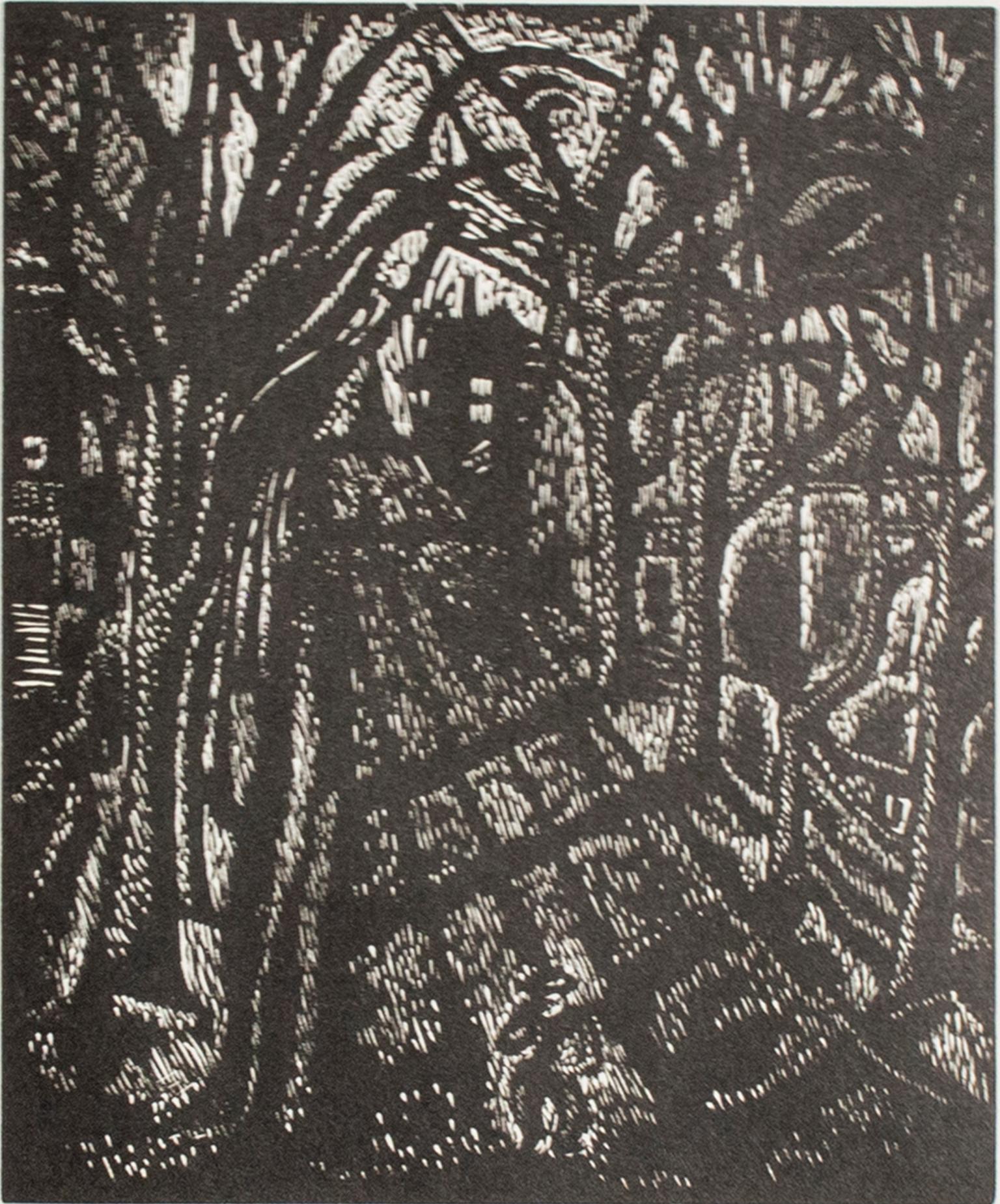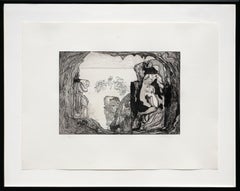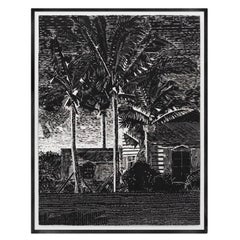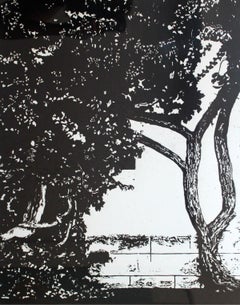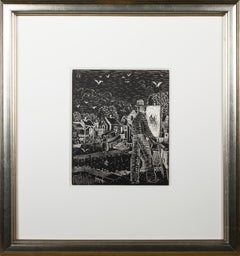Items Similar to Modern Black and White Abstract Tropical Village Landscape Woodcut Print
Want more images or videos?
Request additional images or videos from the seller
1 of 16
UnknownModern Black and White Abstract Tropical Village Landscape Woodcut Print20th Century
20th Century
$900
£682.47
€789.65
CA$1,272.18
A$1,418.24
CHF 739.67
MX$17,149.80
NOK 9,298.02
SEK 8,797.78
DKK 5,893.92
About the Item
Modern black and white abstract woodcut print. The piece features lush trees and foliage growing in a yard behind a house. There are three central figures standing next to a pole and tending to the plants. Currently hung in a black frame with a white matting.
Dimensions Without Frame: H 17.5 in. x W 24 in.
- Creation Year:20th Century
- Dimensions:Height: 27 in (68.58 cm)Width: 33.5 in (85.09 cm)Depth: 1.5 in (3.81 cm)
- Medium:
- Movement & Style:
- Period:
- Condition:
- Gallery Location:Houston, TX
- Reference Number:Seller: A2025.0307.64961stDibs: LU551315995462

About the Seller
5.0
Gold Seller
Premium sellers maintaining a 4.3+ rating and 24-hour response times
Established in 1969
1stDibs seller since 2014
872 sales on 1stDibs
Typical response time: 11 hours
- ShippingRetrieving quote...Shipping from: Houston, TX
- Return Policy
Authenticity Guarantee
In the unlikely event there’s an issue with an item’s authenticity, contact us within 1 year for a full refund. DetailsMoney-Back Guarantee
If your item is not as described, is damaged in transit, or does not arrive, contact us within 7 days for a full refund. Details24-Hour Cancellation
You have a 24-hour grace period in which to reconsider your purchase, with no questions asked.Vetted Professional Sellers
Our world-class sellers must adhere to strict standards for service and quality, maintaining the integrity of our listings.Price-Match Guarantee
If you find that a seller listed the same item for a lower price elsewhere, we’ll match it.Trusted Global Delivery
Our best-in-class carrier network provides specialized shipping options worldwide, including custom delivery.More From This Seller
View AllBoat with Houses Landscape Woodblock Print (Possibly Woodstock School of Art)
Located in Houston, TX
Small black and white woodblock print depicting boat with houses. Possibly from the Woodstock School of Art. Inscribed and signed by artist. ...
Category
Mid-20th Century Expressionist Landscape Prints
Materials
Woodcut
“Truth is Stranger than Fiction” Black and White Abstract Etching Edition 4/15
By Margaret Smithers Crump
Located in Houston, TX
Black and white abstract etching by Houston artist Margaret Smithers-Crump. The work features a collection of abstracted sea creatures such as a crab, eel, and puffer fish. Signed, t...
Category
1980s Abstract Abstract Prints
Materials
Etching
"Trees in Snow" Black and White Winter Landscape Lithograph 2/10
Located in Houston, TX
Black and white winter landscape lithograph by Paula Nelson who was the curator for the Woodstock School of Art Gallery. The piece is signed, titled, and ...
Category
20th Century Naturalistic Landscape Prints
Materials
Lithograph
Black and White Abstract Figurative Etching Edition 98/200
By Jorge Castillo
Located in Houston, TX
Monochromatic abstract figurative etching by Spanish painter Jorge Castillo. The piece depicts an abstract landscape overlooking an empty view from what appears to be a cave. Figures...
Category
1970s Abstract Abstract Prints
Materials
Etching
Black and White Abstract Print
By Katja Jacobs
Located in Houston, TX
Abstract lithograph of a black mass with a painterly appearance around the mass. Painting is signed by the artist on the bottom right corner. It is framed in a light wood frame with ...
Category
1960s Abstract Abstract Prints
Materials
Lithograph
"Here She Is" Black and White Abstract Lithograph Edition 1 of 4
Located in Houston, TX
Abstract black and white lithograph titled by the artist "Here She Is." It is edition 1 of 4 and it is signed by the artist and titled. Work is framed in a metal frame with a white m...
Category
20th Century Abstract Expressionist Figurative Prints
Materials
Lithograph
You May Also Like
"Landscape" Artwork, Linocut and Etching Technique, Black and White by Miki Leal
Located in Madrid, ES
"El paisaje (La casa Bouvet) II, 2022"
Un kilo de verde
Miki Leal
Linocut, monotype and etching. Printed on Somerset 410gr. paper.
AWARDS
2021 Internatio...
Category
2010s Spanish Contemporary Art
Materials
Paper
A garden. Black & white linocut print, Figurative & Abstract, Minimalistic
By Jolanta Babicz
Located in Warsaw, PL
Contemporary minimalistic black & white linocut print on paper by Polish artist Jolanta Babicz. Edition is limited to 5 copies.
Artwork is not framed. Photos with frame are only visualizations.
JOLANTA BABICZ (born in 1967)
In 2009 she graduated from the Artistic Department of the University of Humanities and Economics in Łódź. The subject of her B.A. thesis was computer graphic...
Category
2010s Minimalist Landscape Prints
Materials
Paper, Linocut
Black and White Woodcut Composition (Edition 55/100)
By Naghi Naghashian
Located in New York, NY
Naghi Nagashian (Iran b. 1948), "Black & White Woodcut Composition" Edition 55/100, Abstract Woodcut signed and numbered in Pencil, 20.50 x 17, Late 20th Century, 1965
Colors: Blac...
Category
1960s Abstract Abstract Prints
Materials
Woodcut
'Jones Island' original woodcut engraving by Gerrit Sinclair
By Gerrit Sinclair
Located in Milwaukee, WI
The print 'Jones Island' is something of a self portrait. In the image, an artist stands before and easel, depicting the docks and buildings on the coast. The title indicates that this is Jones Island in Milwaukee, the peninsula along Lake Michigan that today is home to largely industrial buildings. The buildings and figures in the print suggest that this might be a view of the last of the Kashubian or German immigrant settlements on the peninsula before they were evicted in the 1940s to make way for the development of the harbor. The artist in the image thus acts as a documentarian of these peoples. The careful line-work of the woodblock engraving adds a sense of expressionism to the scene, leaving the figures and buildings looking distraught and dirty, though the image nonetheless falls into the Social Realist category that dominated American artists during the Great Depression.
This print was published in 1936 as part of the Wisconsin Artists' Calendar for the year 1937, which included 52 original, hand-made prints – one for each week of the year.
6 x 5 inches, image
10 x 7.13 inches, sheet
13.43 x 12.43 inches, frame
Signed "GS" in the print block,upper left
Entitled "Jones Island" lower left (covered by matting)
Inscribed "Wood Engraving" lower center (covered by matting)
Artist name "Gerrit V. Sinclair" lower right (covered by matting)
Framed to conservation standards using 100 percent rag matting and museum glass, all housed in a silver gilded moulding.
Gerrit Sinclair studied at the Art Institute of Chicago from 1910 - 1915, under Vanderpoel, Norton, and Walcott. In World War I, he served in the Army Ambulance Corps and later recorded his experiences in a series of oil paintings. He taught in Minneapolis before arriving in Milwaukee in 1920 to become a member of the original faculty of the Layton School of Art. He was also a member of the Wisconsin Painters & Sculptors.
Sinclair's paintings and drawings were executed in a lyrical, representational style, usually expressing a mood rather than a narrative. His paintings reveal a great sensitivity for color and atmosphere. His subject matter focused on cityscapes, industrial valleys, and working-class neighborhoods, captured from eye-level. A decade before the popularity of Regionalism, Sinclair's strong interest in the community was reflected not only in his paintings, but also in his encouragement to students to return to their communities as artists and teachers. Joseph Friebert...
Category
1930s American Modern Figurative Prints
Materials
Woodcut, Engraving
Landscape - Original Woodcut - Mid 20th Century
Located in Roma, IT
Modern Landscape is an original xylograph realized during the half of the 20th Century by an anonymous artist.
The artwork represents a view of a village with several buildings and ...
Category
Mid-20th Century Modern Figurative Prints
Materials
Woodcut
"Trees, " Landscape Wood Engraving by Betsy Ritz Friebert
Located in Milwaukee, WI
"Trees" is an original wood engraving print by Betsy Ritz Friebert. It features a man walking down a large path underneath tall barren trees. Unsig...
Category
1930s American Modern Landscape Prints
Materials
Woodcut
More Ways To Browse
Kiyochika Kobayashi
Lawrence Heyman
Lawrence Josset
Lichtenstein Liberte
Lilian May Miller
Mammoth Ski Poster
Mary Teichman
Nell Revel Smith
Oscar De Mejo
Otto Kahn
Pablo Picasso Original Inc Sketch
Parc Monceau Harold Altman
Paul Emile Lecomte Etching
Paul Pedulla
Peter De Pannemaeker
Pierre Maulin
Rene Eugene Lairy
Richard Estes On Sale
